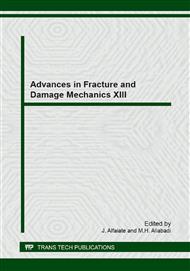p.113
p.117
p.121
p.125
p.129
p.133
p.137
p.141
p.145
Investigation of Residual Stresses in Selective Laser Melting
Abstract:
Selective Laser Melting (SLM) is an Additive Manufacturing method that enables greater design freedoms than traditional manufacturing methods in the production of high value, low volume metallic parts. Despite this now being a well-established processing method, there are a number of issues impeding industrial uptake, including the generation of residual stress and part distortion during manufacture. Prediction of residual stress is invaluable for tuning process parameters, and optimising the part geometry and support structures to limit residual stress based distortion during manufacture. This paper establishes a thermal modelling strategy to predict temperature distribution within a 3D SLM part that is a precursor towards a residual stress analysis.
Info:
Periodical:
Pages:
129-132
Citation:
Online since:
September 2014
Authors:
Price:
Сopyright:
© 2015 Trans Tech Publications Ltd. All Rights Reserved
Share:
Citation:


